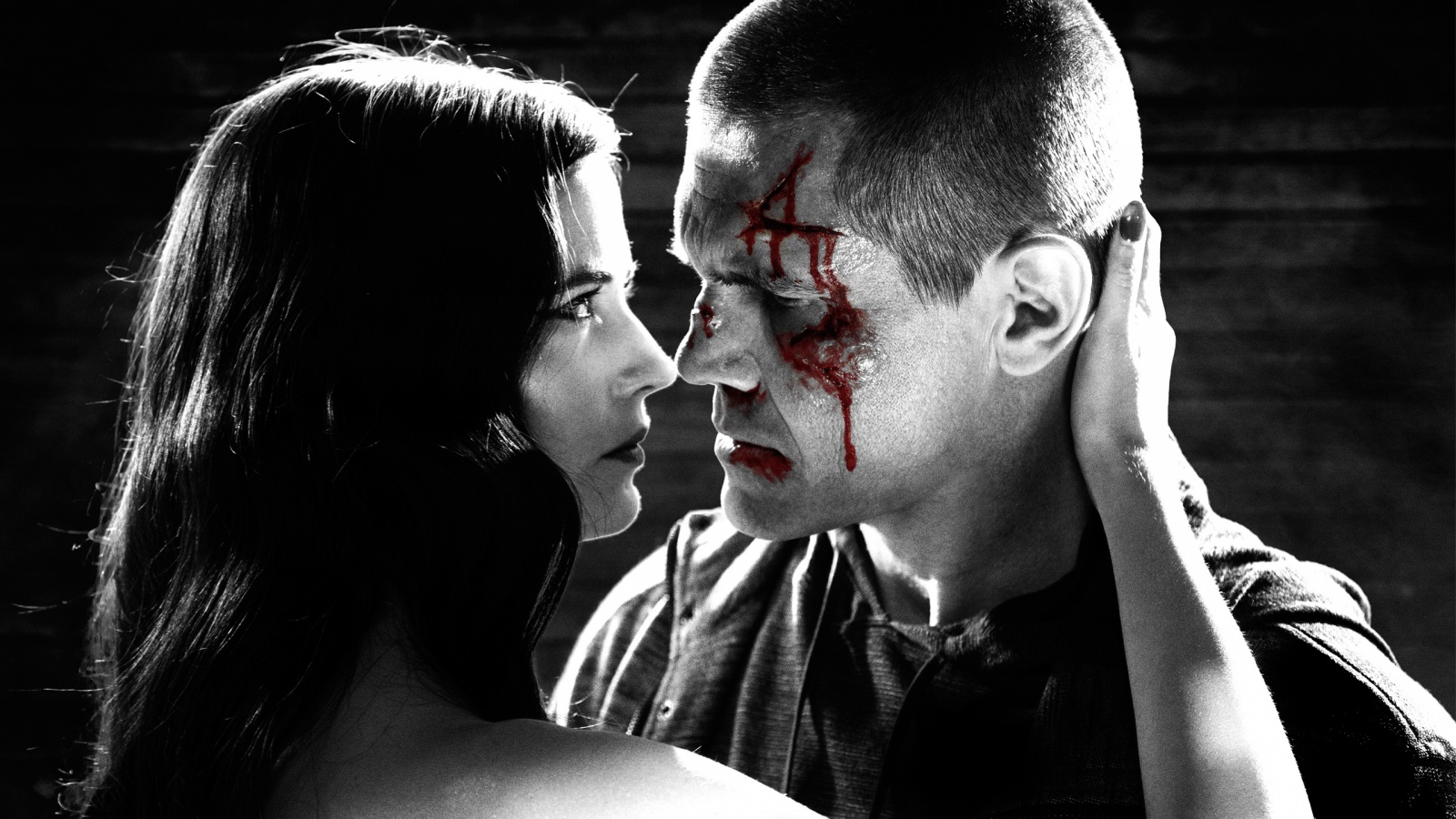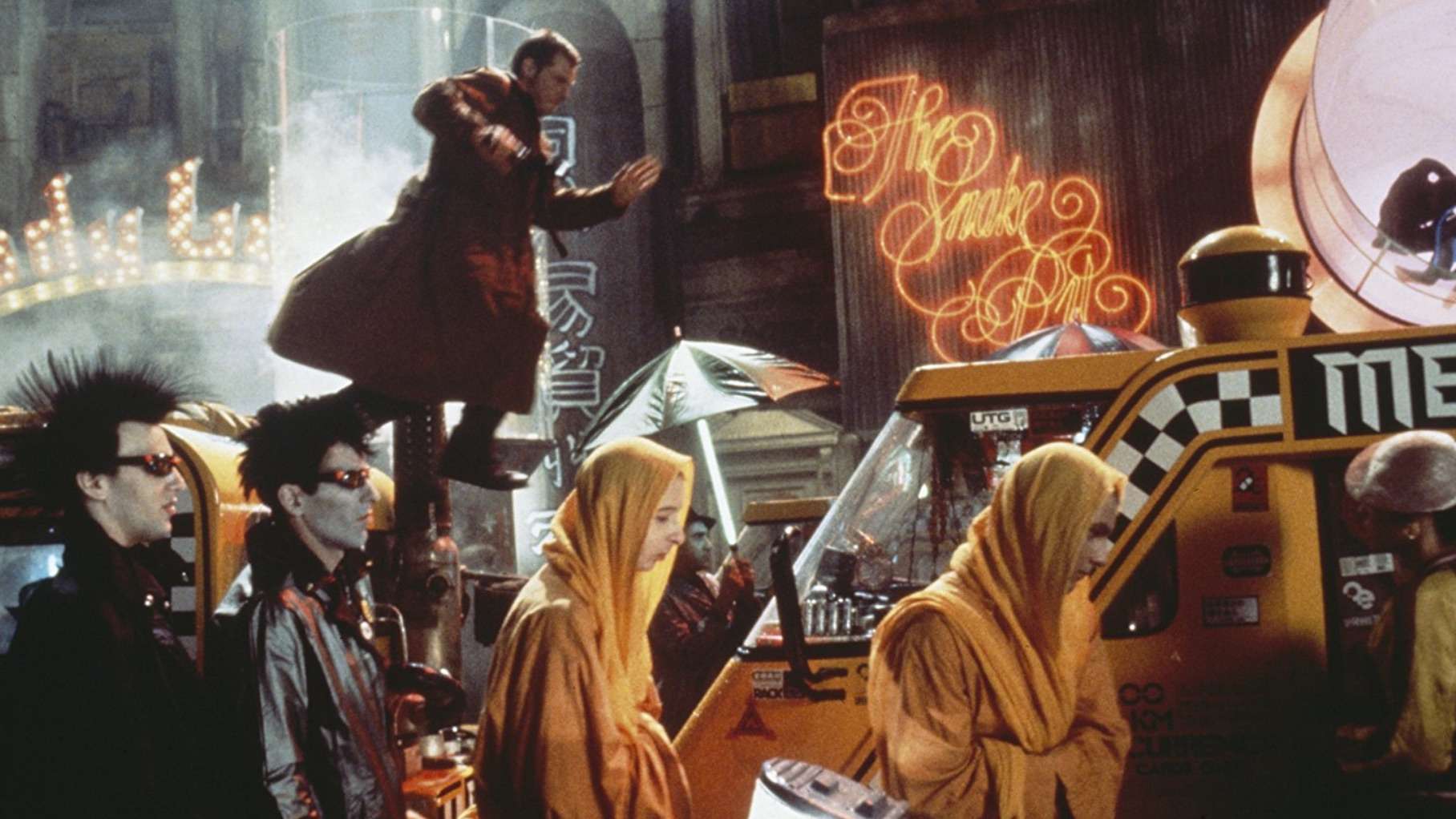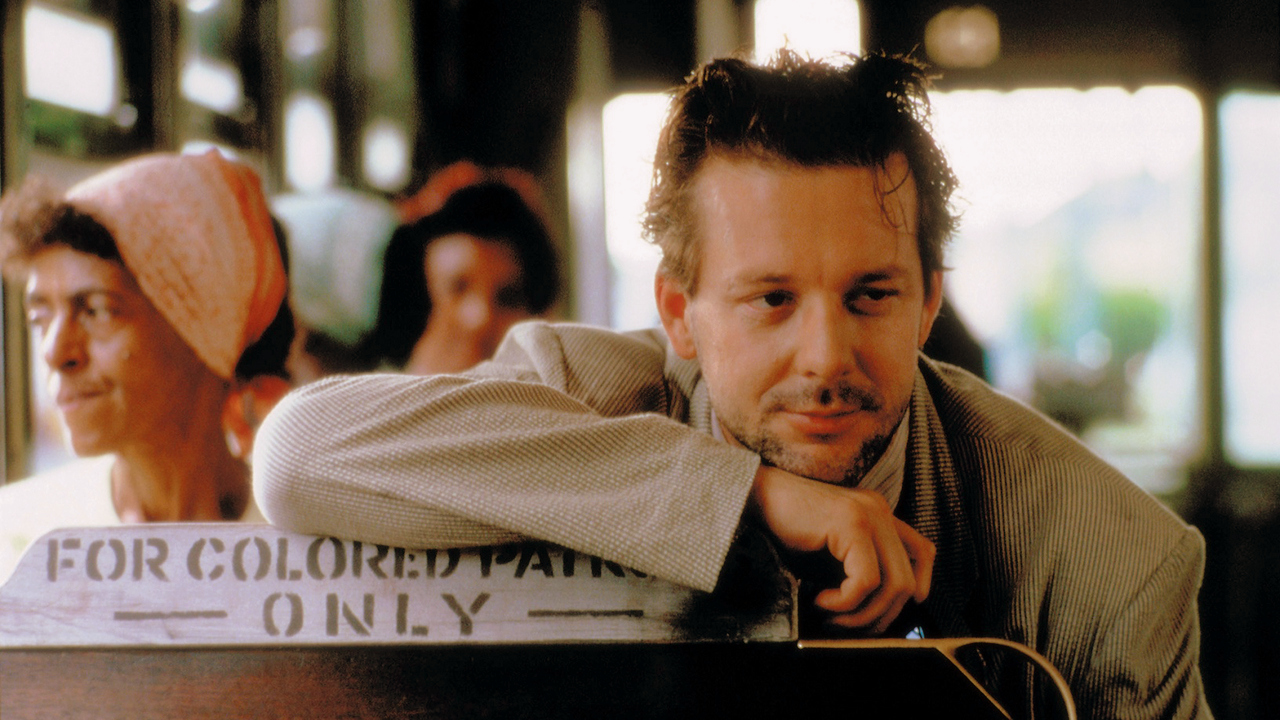Film Noir is a term given to a series of stylistically distinctive films to emerge from Hollywood between the early 1940s and the late 1950s. The actual term film noir, which literally translates as ‘black film’, was coined by French critic Nino Frank, although was only applied some years after the genre had begun.
Film noir was always shot in black-and-white (although modern neo-noir examples frequently move to colour). It features unique lighting schemes that make heavy emphasis of the contrast between light and darkness (the cliché image of the shadows from venetian blinds and twirling fans) with the darkness frequently dominating the frame far more than lit areas.
Film noir is best seen in contrast to the G-man and gangster thrillers of the previous era – where the heroes of those films were cleancut and uncomplicated one-dimensional heroes fighting black hat villains, noir’s heroes are cynical, burned-out men clinging to some tarnished notion of decency who inhabit a morally ambiguous world where deception is a norm and powerful figures guard secrets.
Noir heroes are frequently (although not always) private detectives (the cliche image of the gumshoe in trench coat and fedora). Almost as distinctive an image in noir is that of the Femme Fatales – usually blonde and outfitted in padded shoulders, heels, and hat with veil and cigarette – who represents an image of desirability although just as equally treachery in this world.

Film Noir originated in the pulp detective thrillers of writers like Dashiell Hammett, Raymond Chandler and Mickey Spillane. From these, film noir borrowed the hard-boiled detectives and in particular the terse, world-weary dialogue, which often came delivered in voiceover (another cliche of the genre).
The style of noir was drawn from the stark and exaggerated lighting schemes of German Expressionism (whose directors, cinematographers and production designers sought refuge in Hollywood to escape the Nazis). All of these elements combined to create many classic works of film noir during its heyday that include the likes of The Maltese Falcon (1941), Detour (1944), Double Indemnity (1944), The Big Sleep (1946), Lady in the Lake (1947), The Third Man (1949) and Touch of Evil (1958), among others.
A common error made by those with little understanding of the genre is to label almost any film made in black-and-white as Film Noir. (The Wikipedia entry for Film Noir, for instance, seems to regard almost any film with a detective hero as being noir). Noir requires one or other of several key elements – the distinctive lighting schemes; the shadowy and morally ambiguous world; the focus on crime plots and detective stories; the hard-boiled hero; and the dame/femme fatale.
Classic Film Noir
With its emphasis on mundane crime plots, not much of classic Film Noir can be slotted into the fantastic genre, although there are a number of films from this era that fall into the psycho-thriller vein.
The remarkably stylised Stranger on the Third Floor (1940), which has been cited as the first work in the film noir cycle, is a courtroom drama that becomes a fascinating psycho film. Fritz Lang (who made many non-genre noir works) conjured haunted mood with the Freudian psycho-thriller Secret Beyond the Door (1948). Some other psycho-thrillers of the era such as Shock (1946), A Double Life (1947) and The Night Has Eyes (1948) could be included here.
There were several Film Noir works that delved into themes of clairvoyance and predestination. The original Nightmare Alley (1947) was a film about an ambitious circus performer (Tyrone Power) who starts a fake mind reader and medium act, which comes with a preternatural sense of fate and predestination behind characters’ shoulders. Fear in te Night (1948) remade as Nightmare (1956) concerns a man who has a supposedly precognitive dream of conducting a murder, although this eventually opts for an improbably contrived mundane resolution. Night Has a Thousand Eyes (1948) features Edward G. Robinson as a stage mentalist who begins to experience visions of things before they happen.
Probably the most famous genre example of the era however was the Mickey Spillane adapted Kiss Me Deadly (1955) in which P.I. Mike Hammer (Robert Mitchum) hunts a ‘whatsit’, which turns out to be a suitcase of radioactive materials. Also of note was Elia Kazan’s Panic in the Streets (1950) about attempts to prevent an outbreak of pneumonic plague in Chicago and the British Seven Days to Noon (1950) about the threat to detonate a nuclear weapon in London.
Neo-Noir
Film Noir has become so distinctive and its style borrowed, quoted and parodied by other films so much that the borrowings far outnumber the number of films originally made back during the heyday of the cycle. This has been called Neo-Noir.
Examples of neo-noir include works such as The Long Goodbye (1973), Chinatown (1974), Body Heat (1981), Final Analysis (1992), L.A. Confidential (1997), Road to Perdition (2002), Brick (2005), Kiss Kiss Bang Bang (2005) and Marlowe (2022), among many others.
A number of neo-noirs fall into genre territory. These might include the likes of Black Widow (1987) and Basic Instinct (1992) with their employment of the femme fatale trope; the Coen Brothers’ outright borrowings of the genre in The Man Who Wasn’t There (2001); and The Killer Inside Me (2010), a noir-era work about a psychopathic sheriff.
The single most stylistically striking modern pastiche of Film Noir however, right down to the look all shot in an incredibly stylised black-and-white, the background world, the voiceover dialogue and characters was Robert Rodriguez’s Sin City (2005) and Sin City: A Dame to Kill For (2014), adapted from Frank Miller’s graphic novels.
Noir Pastiche and Genre Fusion
i) Science-Fiction
The first work to merge science-fiction and noir was Jean-Luc Godard’s Alphaville (1965) with Eddie Constantine as a classic gumshoe detective searching for a girl on another planet – the joke being that the other planet was present-day Paris.
The most well-known borrowing of the style of film noir was Blade Runner (1982), which consciously placed noir imagery – Harrison Ford’s worldweary detective in trench coat, femme fatales and Venetian blind-shaded bachelor’s apartments – into a futuristic setting that would later be identified as Cyberpunk.
Other works use the future as a location for film noir-styled tales. Examples might include Lars von Trier’s The Element of Crime (1984), Alan Rudolph’s duo of quasi-futuristic films, Trouble in Mind (1986) and Equinox (1992), and other works like The Gene Generation (2007), Clonehunter (2009), Sufferosa (2011), Black Road (2016), Mute (2018), Zone 414 (2021) and Reminiscence (2021), while the French animated Cyberpunk film Renaissance (2006) even renders the animation in stark black-and-white. Trancers/Futurecop (1985) and sequels feature Tim Thomerson as a time-travelling gumshoe detective. The comedy tv series Dick Spanner P.I. (1987) features a futuristic robot gumshoe.

The superhero film Sparks (2013) is set in a Sin City-type noir-stylised world, while the Marvel superhero tv series Jessica Jones (2015-9) about a super-powered P.I. could be considered a soft case of neo-noir. The most overt of the noir-styled superheroes was the title character in The Spirit (2008), Frank Miller’s insanely entertaining adaptation of the classic Will Eisner comic-strip. Spider-Man: Into the Spider-Verse (2018) features Spider-Man Noir, an alternate version of Spider-Man who comes from a black-and-white noir-styled universe.
A fine example was the Star Trek: The Next Generation episode The Big Goodbye (1987) where The Enterprise crew visit a holodeck simulation of a film noir world. The Outsider (1996) features an amusement park that recreates 1930s gangsters with androids, which proceed to go amok. Both The Thirteenth Floor (1999) and the A Detective’s Story segment of The Animatrix (2003) are set in Virtual Reality simulations modelled on noir. Dark City (1998) takes place in a noir-styled milieu that is revealed to be a city where the inhabitants memories are being manipulated by aliens.
ii) Horror
One of the finest of all film noir pastiches was the strikingly beautiful Angel Heart (1987) wherein a private eye comes to learn that the client who has hired him is really The Devil searching for a man who has reneged on a contract to sell his soul. In a similar vein was the earlier The Dead Don’t Die (1975) in which George Hamilton, seeking to absolve his brother of a murder, becomes wound into a conspiracy involving voodoo and the resurrection of the dead set during the 1930s.
Many of the works involving occult detectives – see Occult Investigators – could be included as borderline noir works. Examples might include Dark Intruder (1965), The Night Stalker (1972) and sequels, Lord of Illusions (1995) and Dylan Dog: Dead of Night (2010).
Many of the works of David Lynch also borrow from noir, notably the pastiche of stylistic elements and lighting schemes to be found in Blue Velvet (1986), Lost Highway (1997) and Mulholland Dr. (2001).

iii) Deconstruction and Parody
One of the most unique variants was the Dennis Potter tv mini-series The Singing Detective (1986) and its disappointing film remake The Singing Detective (2003) where a writer in a hospital bed with a disfiguring condition (named Philip Marlowe after Raymond Chandler’s iconic gumshoe) daydreams himself into the world of a cheap detective novel that he wrote where the world and characters there come to reflect and merge with repressed elements of his past.
One of the wackiest examples of genre fusion is Who Framed Roger Rabbit? (1988) in which Bob Hoskins is a classic gumshoe in 1950s Hollywood who has to deal with toons – animated characters that have an existence of their own and react with humans.
The Umney’s Last Case segment of Nightmares & Dreamscapes: From the Stories of Stephen King (2006) had a hard-boiled detective and his present-day writer exchanging places. In the There’s a Place Where Lost Things Go (2020) episode of the vampire tv series Legacies, the characters visit a noir-styled world.
In Play It Again Sam (1972), Woody Allen receives hard-boiled romantic advice from the ghost of Humphrey Bogart, while this is spoofed in the Play It Again, Sledge (1987) episode of Sledge Hammer wherein David Rasche also receives a visit from the ghost of Humphrey Bogart. The Quantum Leap episode Play It Again Seymour (1989) had Scott Bakula jump into the body of a man who resembles Humphrey Bogart.
The genre has even become plentiful enough that it has attained its own parodies, most notably Fatal Instinct (1993), which parodies several classic films of the genre, and the Steve Martin Dead Men Don’t Wear Plaid (1982), which actually edits Martin in to react with clips from classic films. Robert Altman’s final film, the quasi-fantastical A Prairie Home Companion (2006) contains an appearance from the famous radio show’s P.I. Guy Noir (Kevin Kline), who narrates in a parody of detective fiction voiceover prose.
Recommendations
- Stranger on the Third Floor (1940)
- Nightmare Alley (1947)
- Kiss Me Deadly (1955)
- Alphaville (1965)
- Blade Runner (1982)
- The Singing Detective (1986)
- Angel Heart (1987)
- The Big Goodbye (Star Trek: The Next Generation episode, 1987)
- Who Framed Roger Rabbit? (1988)
- Sin City (2005)
- The Spirit (2008)
- Sin City: A Dame to Kill For (2014)
- Reminiscence (2021)
A full list of titles can be found here Film Noir

